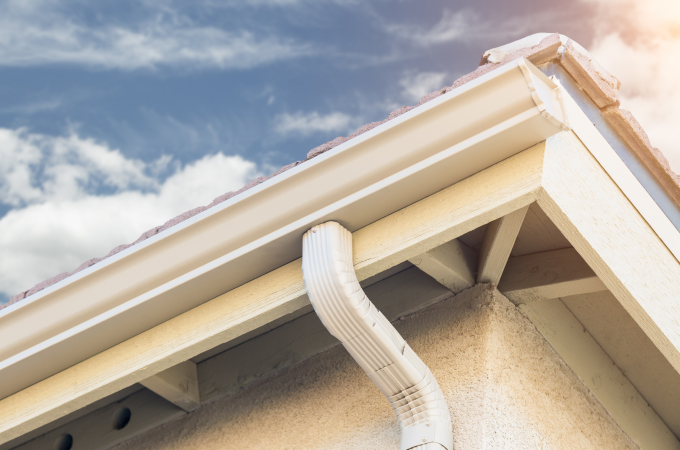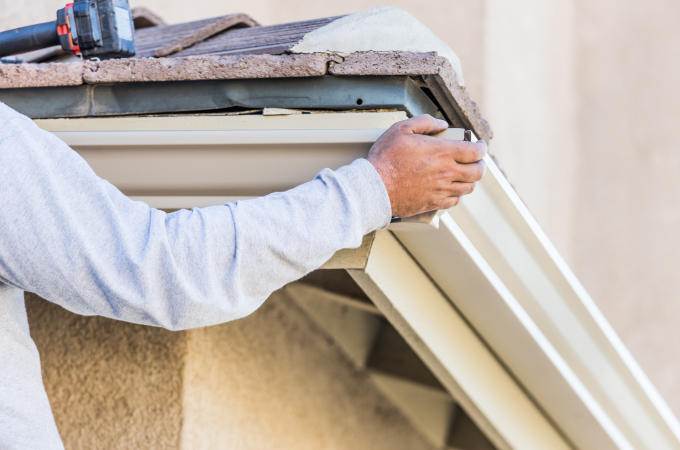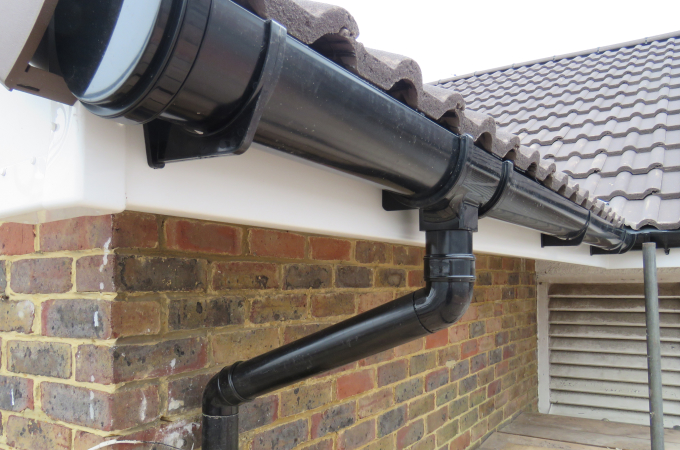Gutter hangers are vital components of your gutter system. Their job is to keep your gutters secure and at the right angle to adequately drain rainfall and meltwater from your roof. Sagging or broken gutter hangers (or brackets) can be incredibly problematic, and unless you inspect them regularly, you might find yourself in need of some significant repairs. Here are the top five reasons why you should always inspect your gutter hangers and repair them as needed.
#1 – Drooping Gutters Can’t Carry Water Properly
In order for water to flow freely, your gutters must be installed at a very slight (almost unnoticeable) angle. This is what essentially ensures that water does not seep into your roof or spill over into your landscaping where it can ultimately damage your home’s foundation. If your hangers have become to come loose, or if they have bent at any point along the trajectory of the system, it throws off the entire angle and may even cause a U-shaped droop that renders the entire system inefficient.
#2 – It Can Damage Your Roof, Fascia, or Siding
Depending on the way your gutter hangers are fastened to your home, they can cause some significant damage if they start to come loose. The roof sheathing can become stripped or crack where the hanger is pulling away, and if the hanger is fastened to fascia boards, it can pull down the entire board and leave you with a significant repair bill. Sometimes hangers are installed directly into the side of the home, and this can be detrimental, as well. As the gutter starts to sag, it pulls on the siding, which can create an unsightly (and potentially expensive) mess.
#3 – One Weak Spot Affects the Entire System
When gutters are installed, they are installed in such a way that the weight of the system (including the water it carries) is equally supported all around your home. You can think of this like a chain; each link must be as strong as the next in order for the entire system to do its job. If one bracket comes loose, this puts undue pressure on the hangers around it, which also loosens them over time. Repairing sagging and broken hangers immediately is vital, and that’s why you should inspect them regularly.
#4 – More Damage Could Ensue
Aside from the damage to your roof sheathing, siding, or fascia, a loose hanger puts the entire system at risk of complete failure, which means once a single hanger goes, a huge section of the gutter (and the hangers securing it to your home) can go right along with it. This can be detrimental to your home and your wallet, especially if you have to replace multiple pieces of siding or fascia along with a large section of your gutter system that fell to the ground.
#5 – It’s Bad for Your Health
You’re aware that a sagging gutter system can cause serious damage to your home, but did you know it can also be detrimental to your health? There are several health concerns that arise from pooling water on your property. Disease-carrying mosquitos make pools of water their prime breeding grounds, and it can be difficult to get rid of them once they start to hatch. What’s more, the excess moisture is the prime environment for mold growth, which can make existing respiratory problems worse – or even cause disease.
It is crucial that you take the time to inspect your gutter hangers regularly, and particularly after heavy rains or severe weather events. Ensuring that the hangers are tight and securing the gutter properly can help you avoid the five scenarios listed here.
 Contractors
Contractors



